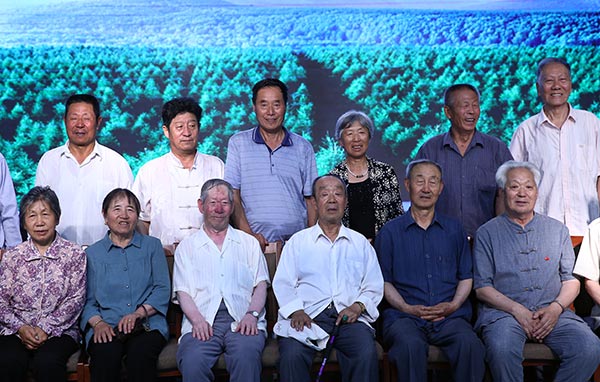 |
|
A group photo of the first generation of Saihanbaers, people who came in the 1960s to plant trees. [Photo by Zou Hong/China Daily] |
Changing of the guard
Most of those working there today belong either to the second or the third generation. Liu Guo, 51, is a second-generation Saihanbaer who arrived 32 years ago, when he was 19. I met him in the dormitory he shares with his work mate Li Feng, 60. The inside of the dormitory features two beds and little more, Spartan but clean. Hot water and electricity are provided, and in winter the big boiler ensures that hot water fills the entire heating system. Liu said he is more than satisfied.
No wonder. Just steps away from where he lives are the so-called second-and third-generation workers' dormitories. (The forest is so vast that it is divided into six areas, each with its own dormitory. Liu's one lies somewhere in the north of the forest.)
"The first-generation building-if that's the right word for an improvised shelter propped up on tree trunks and covered with nothing but twigs and straw-was simply too fragile to survive," Liu said.
"Look at the row of chimneys on that rooftop," he said, pointing to the second-generation dormitory built in the 1970s. "Tree branches were collected from the forest and burned, and that's how people managed to get through the long winters."
(The third-generation dormitory was built in the 1990s, and the fourth, where Liu lives, in 2013.)
Coal replaced wood as a fuel for fire in the early 1980s, and hot water on tap in the dormitory built in 2013 means workers can now take a shower whenever they want to.
"We used to go for weeks and sometimes even months without taking one," Liu said.
"The water in the mountain creeks is really cold, even in summer, and if you were to take a dip in one of those you can be sure you would come down with rheumatism, which happens to be the most common ailment here."
|
|
|
|
|
|
|
|
